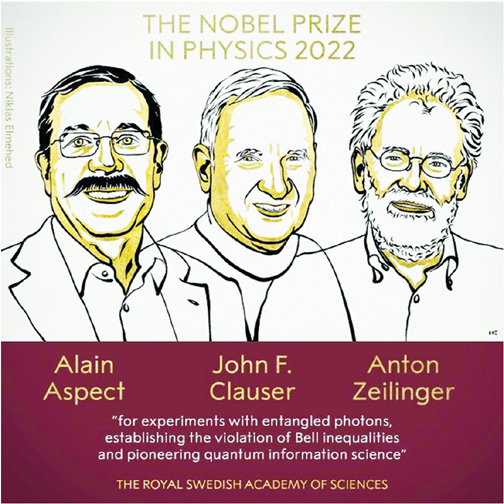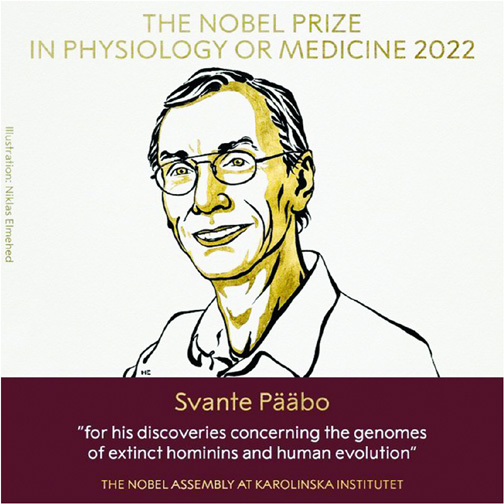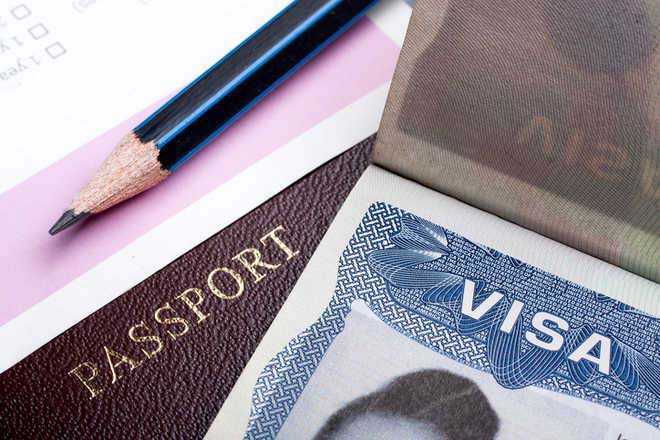Carolyn Bertozzi, Morten Meldal, Barry Sharpless win 2022 Nobel Prize in Chemistry

Carolyn Bertozzi, Morten Meldal, and Barry Sharpless won the 2022 Nobel Prize in Chemistry for the development of click chemistry and bioorthogonal chemistry. While Barry Sharpless and Morten Meldal laid the foundation for a functional form of chemistry click chemistry in which molecular building blocks snap together quickly and efficiently. Carolyn Bertozzi took it to a new dimension and started utilising it in living organisms. “This year’s Prize in Chemistry deals with not overcomplicating matters, instead working with what is easy and simple. Functional molecules can be built even by taking a straightforward route,” said Johan Aqvist, Chair of the Nobel Committee for Chemistry. The Chemistry Nobel is awarded by the Royal Swedish Academy of Sciences as per the will of Alfred Nobel. So far, the committee has chosen 113 laureates in the field, of which seven have been women. Meanwhile, 25 chemistry prizes have been shared by two laureates.
Frederick Sanger is the only person to have won the Chemistry prize twice, in 1958 and in 1980. The Nobel Committee in 2021 awarded the top award jointly to Benjamin List and David MacMillan for their development of a precise new tool for molecular construction: organocatalysis. The tool has had a great impact on pharmaceutical research and has made chemistry greener. The Chemistry announcement comes a day after the Academy announced the Physics Nobel, which has been given to Alain Aspect, John F. Clauser, and Anton Zeilinger for their experiments with entangled photons, establishing the violation of Bell inequalities and pioneering quantum information science. The three laureates conducted groundbreaking experiments using entangled quantum states, where two particles behave like a single unit even when they are separated.
3 scientists share Nobel Prize in Physics
 Three scientists jointly won this year’s Nobel Prize in physics Tuesday, October 4, for proving that tiny particles could retain a connection with each other even when separated, a phenomenon once doubted but now being explored for potential real-world applications such as encrypting information. Frenchman Alain Aspect, American John F. Clauser and Austrian Anton Zeilinger were cited by the Royal Swedish Academy of Sciences for experiments proving the “totally crazy” field of quantum entanglements to be all too real. They demonstrated that unseen particles, such as photons, can be linked, or “entangled,” with each other even when they are separated by large distances. It all goes back to a feature of the universe that even baffled Albert Einstein and connects matter and light in a tangled, chaotic way.
Three scientists jointly won this year’s Nobel Prize in physics Tuesday, October 4, for proving that tiny particles could retain a connection with each other even when separated, a phenomenon once doubted but now being explored for potential real-world applications such as encrypting information. Frenchman Alain Aspect, American John F. Clauser and Austrian Anton Zeilinger were cited by the Royal Swedish Academy of Sciences for experiments proving the “totally crazy” field of quantum entanglements to be all too real. They demonstrated that unseen particles, such as photons, can be linked, or “entangled,” with each other even when they are separated by large distances. It all goes back to a feature of the universe that even baffled Albert Einstein and connects matter and light in a tangled, chaotic way.
Bits of information or matter that used to be next to each other even though they are now separated have a connection or relationship—something that can conceivably help encrypt information or even teleport. A Chinese satellite now demonstrates this and potentially lightning fast quantum computers, still at the small and not quite useful stage, also rely on this entanglement. Others are even hoping to use it in superconducting material.
Svante Pääbo awarded Nobel Prize in medicine
 The Nobel Prizes 2022 for medicine or physiology was awarded to Swedish geneticist Svante Pääbo. Svante Pääbo was given the award “for his discoveries concerning the genomes of extinct hominins and human evolution,” the Nobel Prize committee. Considered the most prestigious prize in the scientific world, it is awarded by the Nobel Assembly of Sweden’s Karolinska Institute and is worth 10 million Swedish crowns ($900,357).
The Nobel Prizes 2022 for medicine or physiology was awarded to Swedish geneticist Svante Pääbo. Svante Pääbo was given the award “for his discoveries concerning the genomes of extinct hominins and human evolution,” the Nobel Prize committee. Considered the most prestigious prize in the scientific world, it is awarded by the Nobel Assembly of Sweden’s Karolinska Institute and is worth 10 million Swedish crowns ($900,357).
Through his pioneering research, Svante Pääbo accomplished something seemingly impossible: sequencing the genome of the Neanderthal, an extinct relative of present-day humans. He also made the sensational discovery of a previously unknown hominin, Denisova. Importantly, Pääbo also found that gene transfer had occurred from these now extinct hominins to Homo sapiens following the migration out of Africa around 70,000 years ago. This ancient flow of genes to present-day humans has physiological relevance today, for example affecting how our immune system reacts to infections.
In 1990, Pääbo was recruited to the University of Munich, where, as a newly appointed Professor, he continued his work on archaic DNA. He decided to analyze DNA from Neanderthal mitochondria – organelles in cells that contain their own DNA. The mitochondrial genome is small and contains only a fraction of the genetic information in the cell, but it is present in thousands of copies, increasing the chance of success.
Svante Pääbo (born 20 April 1955) is a Swedish geneticist specialising in the field of evolutionary genetics and a Nobel prize laureate. As one of the founders of paleogenetics, he has worked extensively on the Neanderthal genome. He was appointed director of the Department of Genetics at the Max Planck Institute for Evolutionary Anthropology in Leipzig, Germany in 1997. He is also a professor at Okinawa Institute of Science and Technology, Japan.
French author Annie Ernaux wins Nobel Prize in Literature

French author Annie Ernaux has won the 2022 Nobel Prize in literature “for the courage and clinical acuity with which she uncovers the roots, estrangements and collective restraints of personal memory.” Annie Ernaux was born in 1940 and grew up in the small town of Yvetot in Normandy. “Annie Ernaux’s debut was Les armoires vides (1974; Cleaned Out, 1990), and already in this work she started her investigation of her Norman background, but it was her fourth book, La place (1983; A Man’s Place, 1992), that delivered her literary breakthrough,” The Swedish Academy said in a statement.
“In her writing, Ernaux consistently and from different angles, examines a life marked by strong disparities regarding gender, language and class. Her path to authorship was long and arduous,” the statement further read. Ernaux’s famous works include A Woman’s Story, A Man’s Place, Simple Passion, Cleaned Out and L’occupation.





Be the first to comment